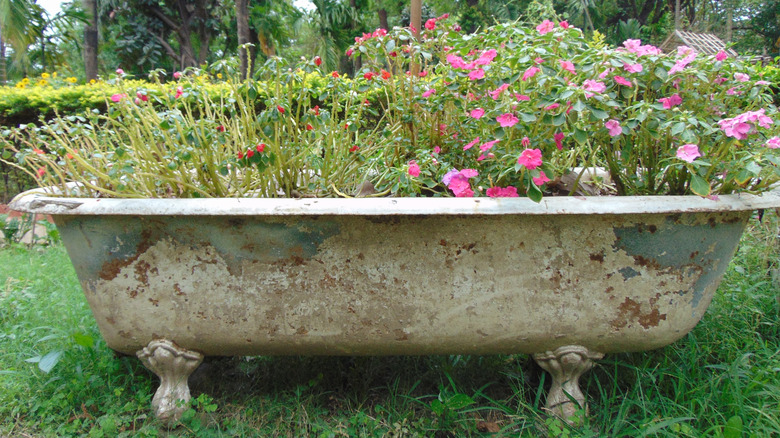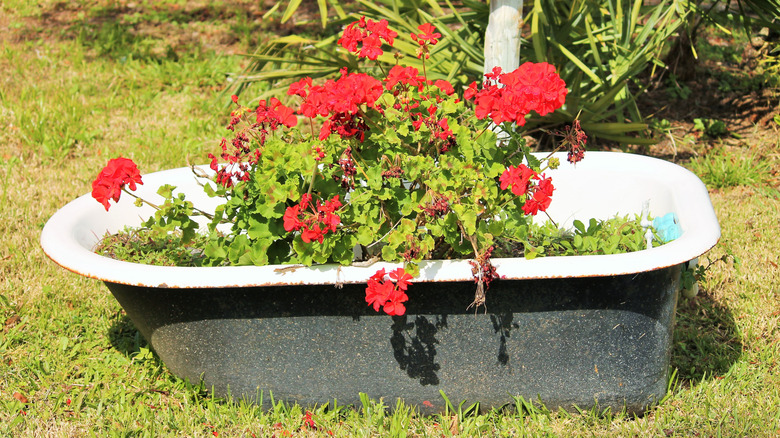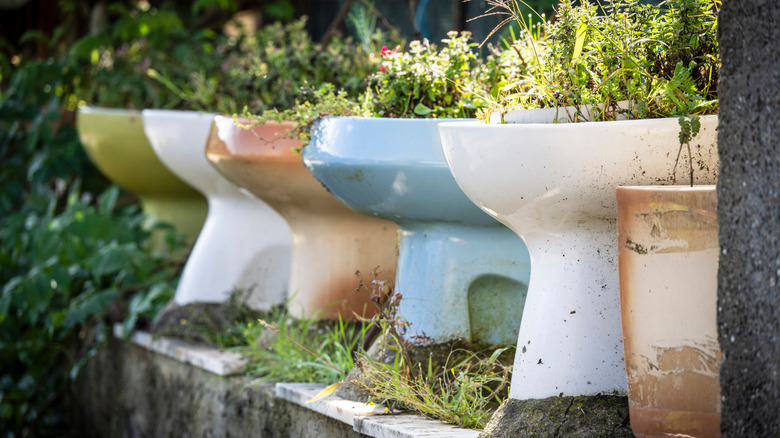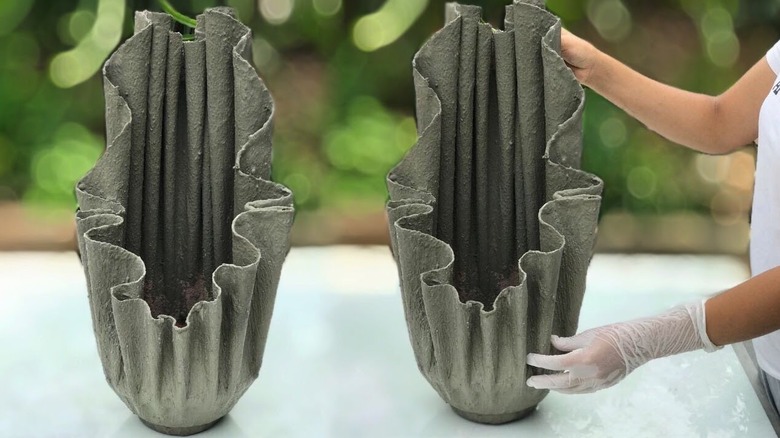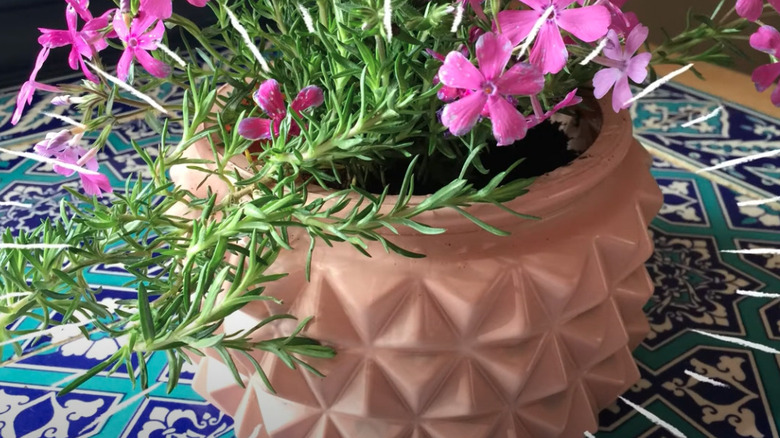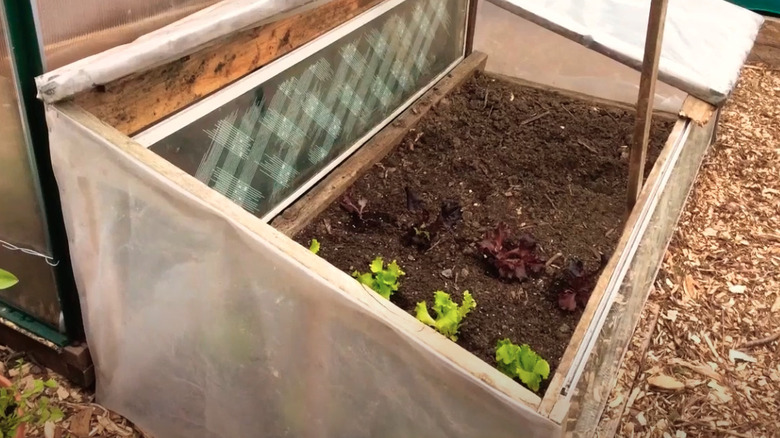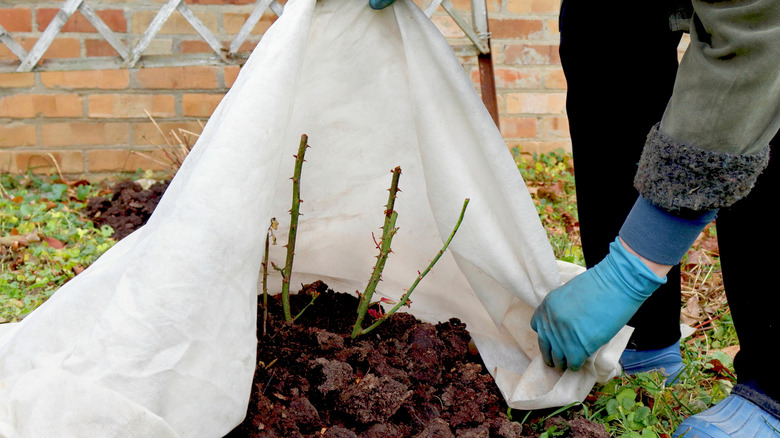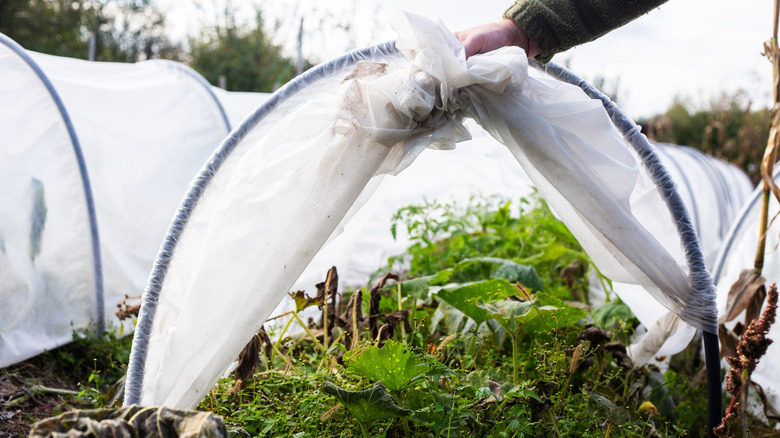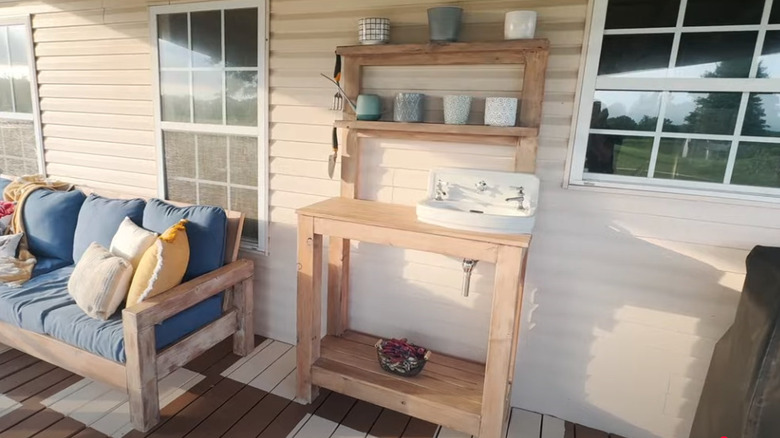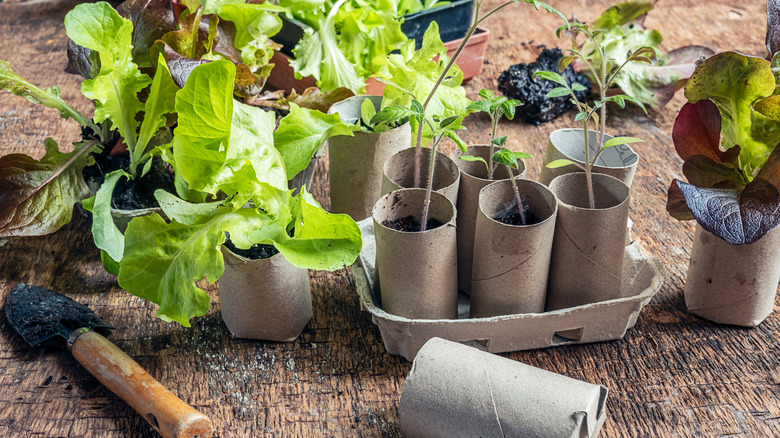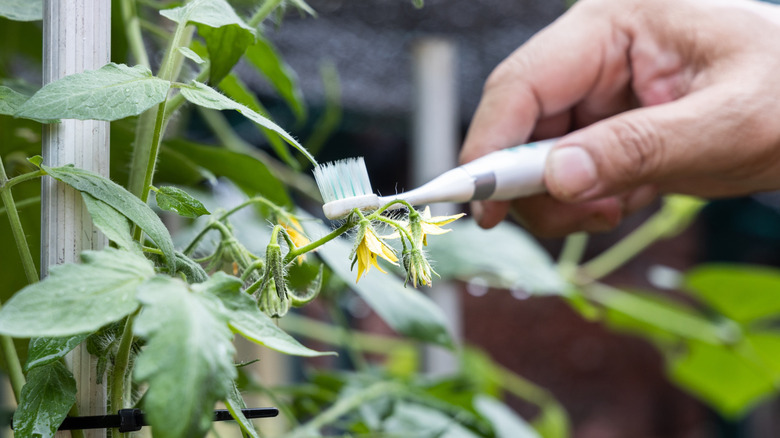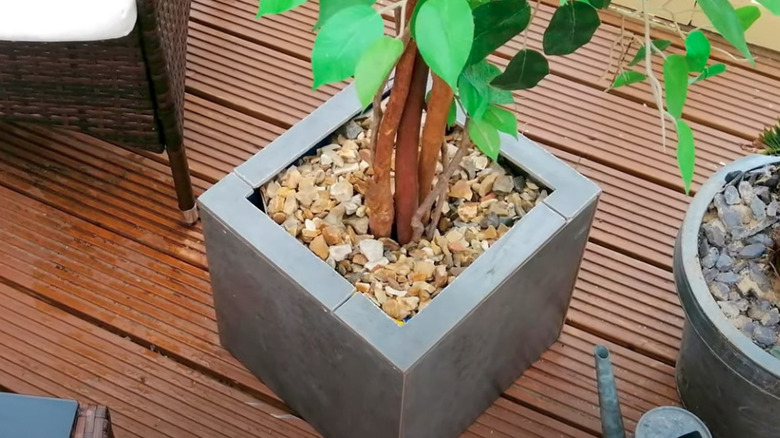11 Unexpected Bathroom Items You Could Be Repurposing In Your Garden
One reason we love gardening so much is because it's incredibly versatile. You don't need a professional greenhouse or an arsenal of specialized tools to cultivate a thriving space; sometimes, the most effective gardening aids are hiding in plain sight. Take your bathroom, for example. While it might seem like the most unlikely room to find hidden horticultural treasures, there's an entire world of tools and supplies that can be repurposed for both indoor and outdoor plants.
To prove it, we found 11 things you can pull out of your bathroom to give your plants a little boost. Whether you're remodeling and prefer to give leftover materials and outdated fixtures a second life, or just see a really good deal and wonder what you could use it for, you're bound to find something here to get your garden going. We'll also include a few tips for optimizing each repurposed item so that you'll be able to extend the life of your plants and have a long season full of blooms or crops.
Move that old cast iron tub into the garden and use it as a planter
Cast-iron tubs make surprisingly excellent planters, as their non-porous construction helps retain moisture. Their durability means they won't rot or break down, and they add a unique, rustic charm to any garden. You may want to add a little bit of mesh to the drain hole to prevent soil from leaking out, or plug it and turn your tub into a pond for water-loving plants, like lotuses and water lilies.
Old toilets can also be turned into small planters
Have you ever noticed the charm of vintage bathrooms? We think it's because everything was colorful, including the toilets. So, don't chuck that cool vintage toilet and turn it into a planter, instead. The built-in basin and the tank on the back are surprisingly spacious for plants that have deep roots. You may want to add some mesh to the drainage area, though, to ensure soil or plants don't end up falling through after a good watering.
Even those threadbare bathroom towels can enjoy a second life as funky planters
Old, threadbare towels might've lost their feeling of luxury, so reuse them as concrete planters. To create these planters, you'll need a towel, cement, and something to drape the towel over, like a bucket or glass. Mix your cement and dip the towel in, being sure it is completely coated. Then, drape it and let it dry. You may want to drill a hole in the bottom once it's dry to add drainage, or just add a smaller pot inside so that the cement planter acts as a water reservoir.
Upgrading your lighting? The old lights are another item that can be upcycled into small planters
Don't toss your old lighting fixtures after an upgrade — turn them into planters instead! Old ceiling or wall lights, and even lampshades, can be turned into unique, cute planters with just a little bit of DIY and spray paint. You may want to use a glass drill bit to add drainage holes if your light cover doesn't have a screw hole in the center. Plus, imagine how cool it would look to have an old, ornate chandelier hanging on your patio that's full of herbs or succulents.
Shower doors can be utilized in cold frames for winter gardening
A simple structure that protects plants from cold weather, a cold frame extends the growing season. Decorative glass shower doors can turn a pretty utilitarian-looking garden fixture into something truly one-of-a-kind. To do this, you'll need the doors, wood to create the frame, greenhouse sheeting, construction staples, and hinges. Build your frame in whatever dimensions fit best in your garden, then secure the doors to the frame with adhesive or caulking. Staple the sheeting to the other sides and screw the hinges to the top. Then, add your lid.
Old shower curtains make excellent temporary frost covers
Reusing shower curtains in your garden as frost covers is a brilliant, eco-friendly way to protect your plants. Ensure you use ones made from non-porous materials so that frost cannot seep in. Depending on the shape of your plant or garden, you can either tie the curtain off in a knot around a shrub or tree, or just lay it over your garden beds and secure it with bricks or stones. The plants will have extra protection from the elements, and you'll prevent one more thing from ending up in a landfill.
Or turn that shower curtain into a cover for permanent hoop houses
If you have a more permanent structure set up for winter plant protection, such as a hoop house, skip the added expense of greenhouse plastic sheeting and use shower curtains instead. Their durable plastic material prevents moisture from entering or escaping, and the clear or semi-transparent ones can act as solarization fabric, trapping heat from the sun and keeping your plants from freezing on cold winter days. You can use rocks or bricks to secure the curtain in place or tamp it down with garden stakes.
Use a drop-in bathroom sink in your potting table build and save some money
If you're building a potting table to make your garden chores easier, consider adding a drop-in sink to one side as a built-in basin for mixing soil, repotting plants, or giving them a good soak. If you're good at DIY, an under-counter sink can be dropped in and finished with a wood counter on top. However, if carpentry isn't your specialty, countertop sink bowls or vintage wall-mount sinks can be installed; all you'll need is a drill bit that's the size of the drainage hole and some adhesive to secure it.
Empty toilet paper tubes can become seed starters
Have some plants that don't like to be transplanted? Try this gardener-favorite hack and reuse toilet paper rolls as biodegradable seed starters. Plus, toilet tubes can attract earthworms, which love to break down cardboard and leave you with nutrient-rich worm castings as a reward. To create seed starters, fold one side over until the tube has a bottom, like a cup, then fill it with soil and your seeds. Once you're ready to plant in the ground, drop the tube into your planting site and cover with dirt.
Use an electric toothbrush to help hand pollinate plants
One of the smart ways to reuse a toothbrush in the garden is by giving it a second life as a gardening midwife. Electric toothbrushes make great tools for hand-pollinating plants that need a little help, especially if pollinators aren't visiting your garden often. The vibrations from the toothbrush mimic the buzzing of a bee, tricking plants into releasing pollen. Start by using the lowest setting of your toothbrush and gently touch the bristles to the base of each flower for a few seconds, then move onto the next blossoms.
Have a few leftover large shower tiles? Turn them into a plant pot
Durable and water-resistant, tiles make great planter materials. Assemble the tiles into a box shape, with one on the bottom, and use instant grab adhesive to secure them in place. If you want something sturdier, secure 1-inch by 1-inch wood posts into each corner and glue the tiles onto those. If you have a tile saw, you can add a rim on top, or just leave it open. Get a tile drill bit to drill a few drainage holes, or use the planter as a decorative pot and add an inner pot.
